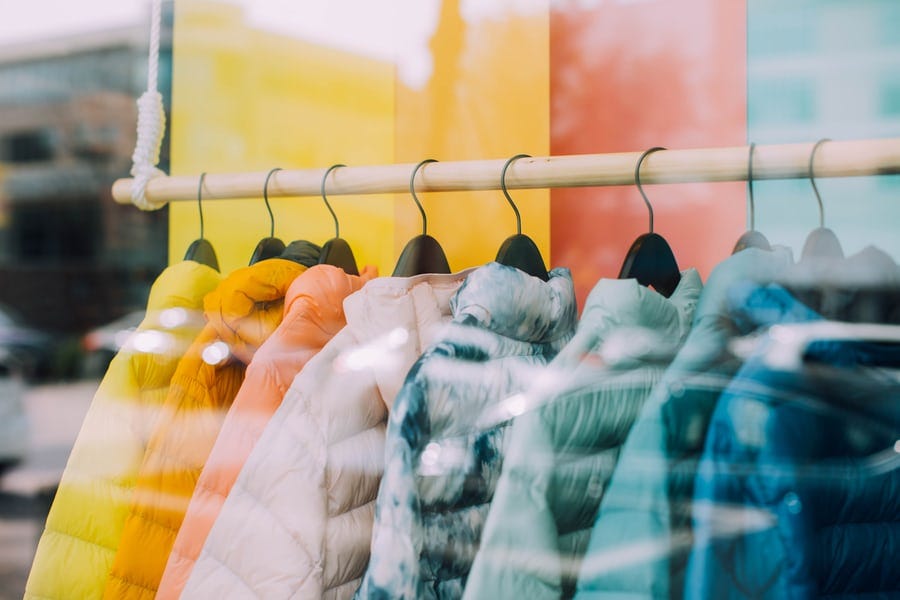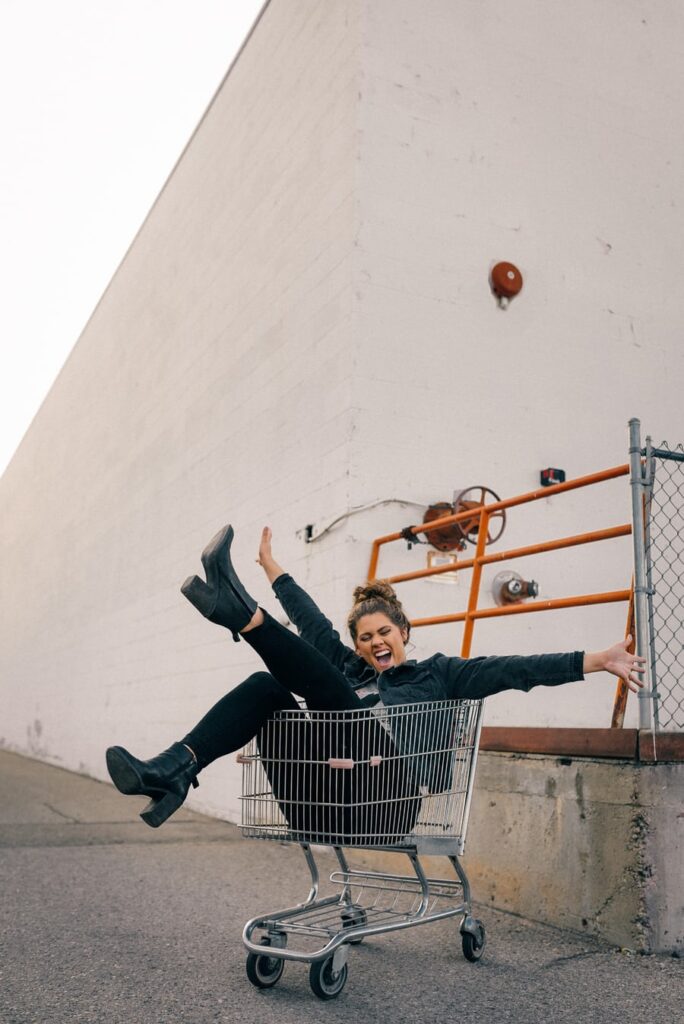Consumers are STILL spending like there’s no tomorrow.
We thought the buying spree was a quick fad once vaccines rolled out and cases slumped but now it’s gotten quite ridiculous.
How much could one possibly buy?
After a couple of beach homes, cars, MacBooks, furniture, the next stop are investments — the best financial decision one could make. If you risk whatever you are willing to lose, block emotions, passively invest, and stay diversified, you will always be safe and sound.
To infinity and beyond!
Unfortunately, people still prefer depreciating materialistic items more than invisible returns in their portfolios and have continued to shop till they drop.
Flushed with savings, increased wages, higher quit rates, and job openings, consumers are truly relentless.
Thanks to early online ordering and decent foot traffic in stores starting on Black Friday, consumers got their Christmas deliveries on time this year despite extreme supply chain shortages.
Now today and in the coming days, economists and retailers expect roughly $120 billion in returns! With over $1 trillion spent this holiday season and $150 billion to online retailers, now there is roughly $15.2 billion worth of unwanted presents. Fewf. I’m not alone in returning back to the store.
Even Google searches for keywords such as, ‘discounts’, ‘offers’, and ‘sales’ went considerably down this month despite no stimis since 2020, Fed tapering plans in 2022, exorbitant prices, and lower savings rates.
Why have Americans given up so easily on finding bargains and continue to shop till they drop?
It’s not so much that they have given up, instead, they have no choice for many staple goods and believe they are better off financially than they really are. The classic most common assumption that gets Americans in trouble especially when a recession hits out of the blue.
With pent-up lockdown demand and almost a year into the vaccination rollout, Americans are sabotaging themselves financially once again.
Although inflation is at its highest rate in 40 years and inventory costs are at their 30 year low, economists, researchers, and everyone except for consumers themselves seem to be worried about Americans’ frivolous spending habits.
This not only translates to higher earnings potential for companies to funnel more cash flow into boosting wages. They also have more opportunities to charge more for goods deepening the inflationary hole and wounding consumers’ pockets.

The Comfortability Index Around Higher Prices
Thankfully for the most part, inflation is keeping up with higher wages. According to data from the Economic Policy Institute, a “V-shaped” wage curve had begun in April 2021. This translated into a 5% yoy jump in average hourly earnings. Last summer I wrote an article about how the employment boom was most ideal for teenagers, and now rising wages have flowed into top management and first-year analyst salaries at many prominent banks. On top of this, talk around free Pelotons, free Grubub subscriptions, higher bonuses, and longer PTO are all incentivizing top talent due to the labor shortage. Not to mention airlines are dealing with a staffing shortage as workers are calling in sick and quitting at record rates. Wages must rise or else companies won’t be able to support themselves! Employees deserve more credit than they receive!
If consumers are great at one thing, they are sticky. They adapt rapidly to a new situation, in part because they have to, not always because they want to. When the pandemic shut everything down, they had no choice but to work harder, increase their income sources, save more, stay safe, and spend less. The times also caused them to spend less since there were fewer big-ticket items to spend.
On top of this madness, the prevalence of discount shopping at the start of the pandemic, not now, boomed. Discount retailers such as Dollar Tree, Dollar General, and Five Below, not penny stocks, have seen a whopping 65% surge this year compared to 2019. At the start of the pandemic, Americans were overly cautious for a good reason and loaded up on cheap goods that Target, Walmart, even Amazon the big-box behemoth retailers would charge double for.
Americans have always been the best bargain-hunters yet as the vaccine rollout is now almost 2 years in and some normalcy took shape this summer, discount shopping has been tainted. Looking for bargains is no easy task. Americans want everything for free. I don’t know about you but I don’t think I’ve ever been able to actually find a legitimate usable discount ONLINE. Most are gimmicks and unusable. After-pay and BNPL (By Now Pay Later) options have become too attractive for a bad reason as people bought things they didn’t need with money they didn’t have and now it’s come time to pay off the whole purchase and they can’t afford to do so. 24% of BNPL users’ credit cards were maxed out according to a BofA’s survey in May requiring extra vigilance on delinquency risk. Spending is easier than ever in this digital age.
But what really drove Americans off course above all was the pumped fiscal and monetary stimulus into their empty pockets. Stimulus checks from Congress and low interest and mortgage rates through QE bond-buying program through the Fed’s actions lead to more anticipation for a return to normalcy than vaccinations.
The vaccines were just the icing on the cake. Of course, Americans like to live it up in the present and don’t think too far ahead so this spending has quickly translated into higher credit card debt, stock prices, higher wages, and home prices. Certainly not a bad year for the S&P 500 closing out the year with a 27% return. Only its prices and valuations are about to pop like consumers’ wallets at any moment. Eventually, Americans will have to slow down, most likely when the Fed plans on tapering 3 times next year and end its bond-buying program around March. Higher rates will hit them and cheap free money won’t be falling off trees.
As businesses continue to scramble to boost pay to fill a near-record number of open jobs, wages and salaries must keep up. This all gives Americans extra money to spend. Solid hiring, healthy savings, and strong pay put them in the best financial position of their lives but only time will tell if they will stay here.
Since consumer spending makes up two-thirds of the economy, it is a strong sign the recovery is well underway. We aren’t out of the woods yet and 2022 will come with even more hurdles, especially on the financial front as these past two years have been wickedly too good.
Although there’s nothing more expensive than a missed opportunity, with excess froth and liquidity in the markets, everything is blurred.
2021 was the year of the bubble. 2022 might be the pop.
Nevertheless, as the year wraps up tonight, literally, reflect back on your diligence, returns, milestones, and most of all health. I attempted to do this morning and it’s always been difficult for me to quantify how much I’ve done since I believe in the mantra, less = more. Plus, I am not one to jot down milestones. I prefer to live in the present so this was a tough exercise but thankfully my investment and financial accounts are the most precise and keep track of everything for me! Thank goodness for technology, customer service, and Personal Capital. (This is not sponsored or affiliated in any way) I’m extremely appreciative of their free net-worth tracking platform to keep track of my 7+ accounts.
Without our health, we can never be truly wealthy. If you’re reading this now, you have plenty to be grateful for. Invest in yourself instead. It will pay higher dividends than any gadget will. If you need it, get it but after that, look to something else for pleasure. Life is rich when we appreciate how far we’ve come and what we’ve done to get there.
Now stop spending. You really don’t need it.

